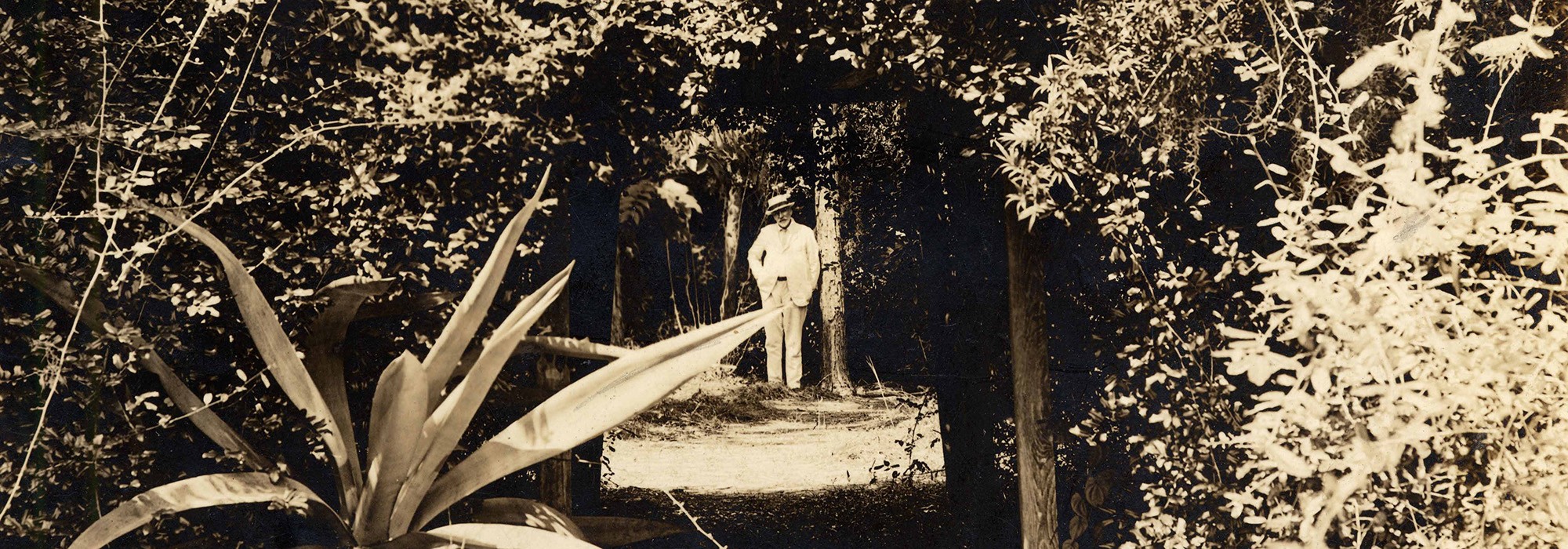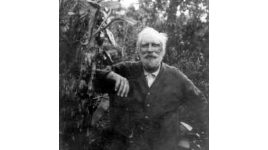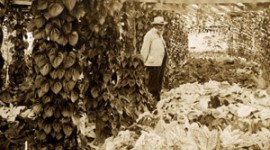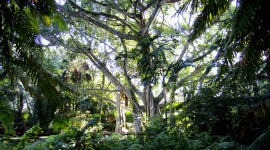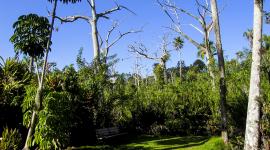Henry Nehrling Biography

Throughout his life Dr. Henry Nehrling (1853-1929) was drawn to the wild places of America. During the last quarter of the 19th century, his writings on nature reached international fame.
Nehrling was raised within the German immigrant community of pioneers that populated the primeval pine forests of Sheboygan County Wisconsin. Though he was not formally educated with the scientific names of birds or plants, his strong land ethic was formed during his youth on walks to school and while herding his father’s cattle through the old growth forest. He began to track the comings and goings of seasonal songbirds on and it was these early experiences and his morning the loss of woodlands to farms and towns that would heavily color his later writings.
Nehrling was home schooled and later graduated with a Classical education from the Lutheran Teachers Seminary in 1873. He became a teacher in the suburbs of Chicago, married Sophie Schoff with whom he would have nine children, and soon moved from the suburbs to the wilds of Texas, stopping briefly in Houston and later moving west to the arid Post Oak forests of Lee County. For ten years he stayed in the South, first in Texas and later in the Ozarks of Missouri, living wholly among nature, trekking through wilds, honing his writing skills, and contributing essays on ornithology to scientific journals. During that time, Nehrling traveled as far afield as Louisiana and Florida where he was captivated by the evergreen Southern Magnolia, Mocking bird, and the balmy climate. When the opportunity arose for him to return to Wisconsin to fill the position of custodian and director of the new Public Museum of Milwaukee, his strong sentiments for the Southern Gulf States led him to also purchase a rural estate on the outskirts of the hamlet of Gotha in the lake district of Central Florida.

Collections in the Public Museum of Milwaukee grew under Nehrling’s administration to be ranked among the top three natural history museums in the nation. Nehrling visited the World’s Columbian Exhibition in Chicago, purchasing exhibits and shipping them back to Milwaukee. He also secured, for his own possession, the collection of tropical caladiums from the Brazilian exhibition. He returned to Milwaukee with the brilliant leaved caladiums and grew them in a greenhouse at his residence where he would later hybridize them. His hybrid creations increased in number and he began to receive fame among plant enthusiasts. He continued to purchase plants from collectors around the world, shipping many of them from his greenhouse to the garden he was making in Florida: the Palm Cottage Garden.
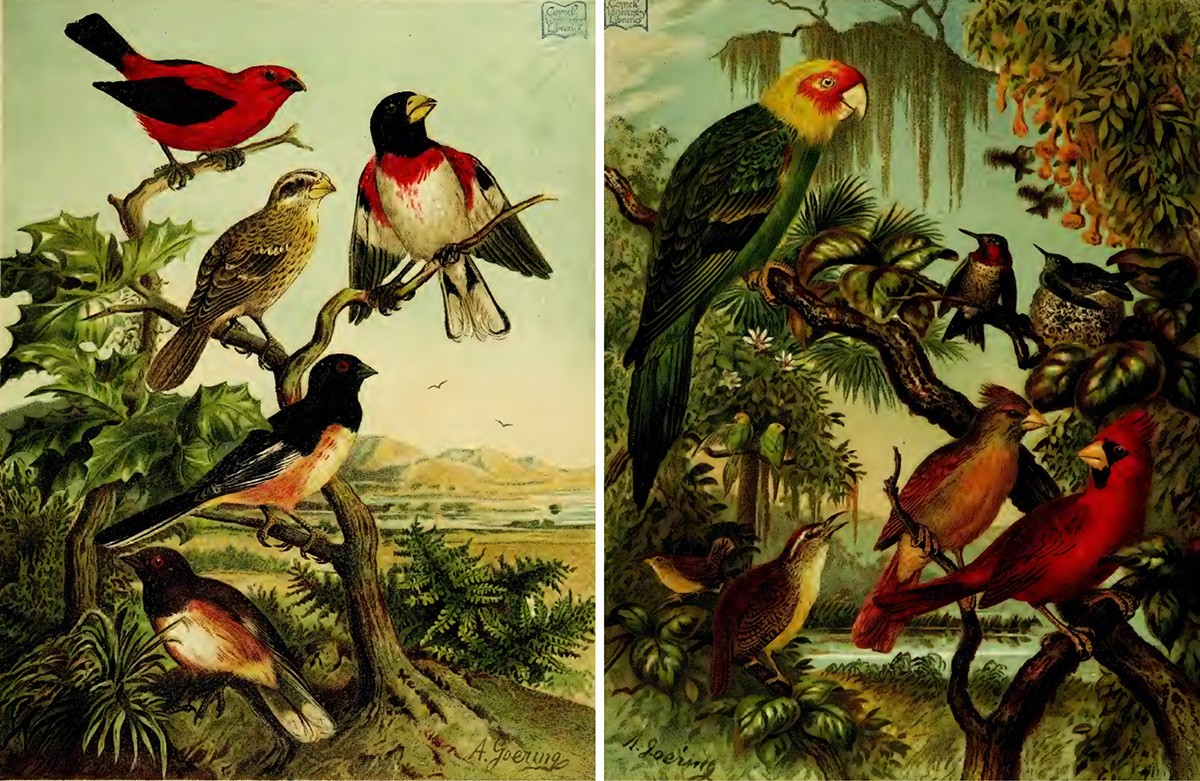
Nehrling retreated to Gotha from Milwaukee for the month of November each year and sometimes longer. He devoted his leisure time to trekking, building his garden, and writing. Already recognized as an authority in American ornithology, Nehrling’s literary style resembled that of naturalist John Burroughs whom he quoted in his two-volume book, Our Native Birds of Song and Beauty. Similar to Burroughs, he revealed an emphasis on native birdlife with corresponding descriptions of the ecological niche within the landscape where each bird resided. After an absence of twenty years, Nehrling returned to the place of his youth and found that farm fields, meadows, and towns had replaced the forest he knew. Accordingly, the song birds of the deep forest were replaced by species commonly found around domestic settings. He observed that springs no longer filled and streams ran dry where the forest had been felled. His writing often reflected his mourning the loss of this landscape and pleadings for the conservation of wild nature.
In 1904, under political conflict with the museum’s governance, Nehrling resigned his position with the Milwaukee Museum, briefly taking a position at the Philadelphia Natural History Museum before moving permanently to Florida. Once settled in Florida he rarely travelled outside its borders again.
Nehrling continued to develop his Palm Cottage Garden. Thousands of visitors came to see his caladiums growing in extensive rows within the slat houses. He supplied his finest caladiums in bulk to commercial establishments, which were sold to the consumer market. In addition to this commercial crop, Nehrling filled his garden with exotic plants from around the world: first, woody evergreens from Japan and, later, full collections of rare palms and tropical species. Nehrling obtained plants through international correspondence with leading botanical gardens and front-line plant collectors. Many plants had never been seen as a living specimen outside of their native environment and were known by specialists only as dried specimens in herbariums. Leading plant scientists visited Palm Cottage Gardens to study these plant collections. Nehrling was appointed a collaborator with the Division of Foreign Plant Introduction of the United States Department of Agriculture. His garden swelled with government provided plants which he observed and recorded, making more than 300 new introductions.
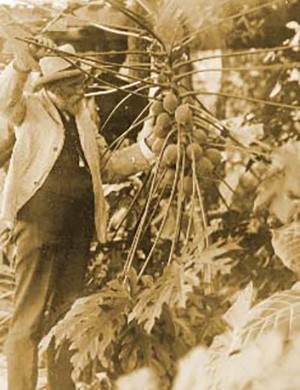
In 1917, a severe freeze caused the loss of Nehrling’s entire commercial crop of caladiums, as well as many of his rare plant specimens. After the setback, he began to focus on finding a more southerly place to establish a second garden for strictly tropical plants. Nehrling was invited by developers to establish his tropical plant nurseries as an area attraction in Naples, Florida. His nursery operations were underway at Naples within a year following the freeze and, by 1925 more than three-thousand species of ornamental plants were growing in his ‘Garden of Solitude.’ It was the largest collection of tropical ornamentals within the state; plants growing outdoors in the earth exceeded the most extensive indoor collections in northern conservatories. Leading scientists, industrialists, and nature lovers ventured to Naples via sandy rail lines and boat to see the plant collection.
Nehrling favored using native species of plants for the structural foundation of a garden and he perfected this approach in Naples. He selectively cleared the land to make room for his plant experiments, retaining much of the existing native plant material. His garden consisted of xeric-uplands, seasonally wet pine flatlands, tropical hardwood hammock, cypress swamp, estuary marsh, and mangrove swamp. He utilized each environmental niche, filling them with plants suitable for the specific locations. Through his process of selective editing and elaboration he created the first designed wilderness garden in Florida.
Nehrling continued to publish through the 1920s, including for the Gardeners’ Chronicle, the foremost British horticultural journal; Garden and Forest; Die Gartenwelt in Germany; and a weekly column for The American Eagle, the journal of the Koreshan Unity Blazing Star Publishing House of Estero, Florida. The Eagle grew into a leading horticultural journal as Nehrling spread his knowledge of horticulture, gardening, and more especially his conservation land ethic.
Nehrling died in Gotha in 1929, surrounded by letters from friends, collaborators, and admirers, including Liberty Hyde Bailey who had visited him the previous week. Newspapers across the nation and in Europe eulogized his life and mourned the death of this great American Naturalist.
Bibliography
Henry Nehrling Collection, Archives and Special Collections. Rollins College, Winter Park, Florida.
All images courtesy The Henry Nehrling Society, Inc.
About the Author
David Driapsa, ASLA is a landscape architect with a practice in cultural landscape research, planning, and design. He is the Florida liaison for the Historic American Landscapes Survey, a documentation program of the National Park Service. He is past chair of American Society of Landscape Architects Historic Preservation Professional Practice Network.



